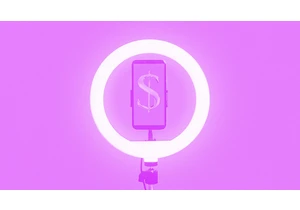One in five messages posted on the social media platform X contain an emoji. The cartoonish representations of smiley faces, human beings, and objects have become a key part of how we communicate in the 21st century. They help us understand each other—and the world, which is why conservation biologists have called for the number of emoji to be rapidly expanded to better represent the biodiversity on our planet.
At present, the list of emoji users can deploy in conversations is severely limited and skewed toward certain species, argue Stefano Mammola, Mattia Falaschi, and Gentile Francesco Ficetola, researchers at nature institutions across Europe. There are 92 animals, 16 plants, one fungus of unknown origin, and one microorganism that is difficult to definitively identify available to users. The researchers want that to change, and the number of emoji to expand to incorporate all parts of the natural world.
“In the digital era, the communication landscape is changing rapidly, with emojis, gifs, and other means becoming central elements to convey messages effectively,” Falaschi tells Fast Company.
“Such strong taxonomic bias is in line with current societal awareness of biodiversity, which tends to prioritize animals over other taxa,” the authors argue in their paper, which was published this week in the journal iScience. In layman’s terms: We’re focusing too much on the cute and fluffy, and overlooking some of the uglier, but no less important, parts of the natural world. Those that are most overlooked include insects, crustaceans and arachnids.
“We would like to see more emojis depicting less-known organisms such as flatworms, aquatic fungi, water bears, and others,” Falaschi says. “Still, we understand that new official emojis need the approval of the Unicode Committee, and this may require some time and discussion.”
Representation within emoji is a perennial issue for the pictorial depictions of our lives. Since 2015, Apple has offered a range of skin tones for emoji to more accurately echo the diversity in society. The authors of this paper say they would welcome similar better representation of parts of nature that are often overlooked.
However, not everyone reckons we should speak up for the centipedes, spiders, and scorpions of the world. “For scientists, an exhaustive and descriptive taxonomy is of course necessary,” says Alexander Robertson, an emoji researcher at Google who was not involved in the study. “But for day-to-day use, especially where emoji are concerned, this will be overkill.”
Robertson points out that there’s already widespread agreement that there are too many emoji—the Unicode Consortium, which approves applications for new emoji, has slowed the pace of new approvals in recent years after recognizing that users were becoming swamped by the number of options to choose from. There’s also little evidence that ordinary users are yearning for more bug emoji. Even those that the authors say are overrepresented in the current emoji tree of life, including animals, don’t crack the top 100 most-used emoji.
However, Robertson says petitions for some emoji may be successful: he advises that they do their research to suggest some that may benefit us all. “Check the proposal guidelines and identify which emoji are distinct, have multiple uses—i.e. not just literally representing an animal—and can be used in conjunction with other emoji to express something new,” he says.
Zaloguj się, aby dodać komentarz
Inne posty w tej grupie


Yahoo’s bet on creator-led content appears to be paying off. Yahoo Creators, the media company’s publishing platform for creators, had its most lucrative month yet in June.
Launched in M

From being the face of memestock mania to going viral for inadvertently stapling the screens of brand-new video game consoles, GameStop is no stranger to infamy.
Last month, during the m

The technology industry has always adored its improbably audacious goals and their associated buzzwords. Meta CEO Mark Zuckerberg is among the most enamored. After all, the name “Meta” is the resi

Even as AI becomes a common workplace tool, its use in

Finding a job is hard right now. To cope, Gen Zers are documenting the reality of unemployment in 2025.
“You look sadder,” one TikTok po

